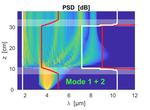Charles Nicklas Christensen
PhD, AI researcher
Machine learning for drug discovery
University of Cambridge
Biography
Charles Nicklas Christensen is an AI/ML research scientist at GSK, focusing on foundational AI and agentic LLM research for drug discovery. His work includes developing new agentic workflows for drug discovery, e.g. for GSK’s AI system Jules , and accelerating inference pipelines for LLMs.
Previously, he was a ML research scientist at Oxford Nanoimaging, ONI , where he architected and productionised deep learning methods for spectral demixing, image segmentation, and super-resolution reconstruction.
Charles has a background in physics and holds a PhD from the University of Cambridge, where his research centered on deep learning-based methods development, e.g. ML-SIM and ERnet , for optical microscopy and live-cell bio-imaging [Science Advances (2020) , Biomed. Opt. Express (2021) , Nature Comms. (2022) , Nature Methods (2023) ].
- Agents & LLMs
- Drug discovery
- Reinforcement learning
- Non-linear physics
- Bio-imaging
-
PhD in Computational Biology, 2022
University of Cambridge
-
MRes in Image Processing and Sensing, 2018
University of Cambridge
-
MSc in Applied Mathematics, 2017
Technical University of Denmark
-
BSc in Physics, 2015
Technical University of Denmark
Experience
Research on drug discovery using LLMs and agentic workflows.
- Multi-agent reasoning and orchestration (cf. emerging “Deep Research” type of inference).
- Contributed to GSK’s GenAI system, Jules
- Acceleration of multi-node inference for LLMs pre-trained in-house, focusing on parallelisation and constrained decoding for agentic use.
- Drug discovery
- Multi-agent systems
- LLM research
- LangGraph
- Python
- C++
- Image processing
- Deep learning
- Pytorch
- CNNs
- Pre-training vision transformers
- Image processing and CV
- MLOps
Part-time involvement in non-profit organisation. Started as a research project during master’s degree and spun out in 2019 with five fellow PhD students.
- Open-source hardware design of air quality monitor.
- Aggregate data analysis and predictive modelling.
- Deployment of sensor networks in several countries across South America, Africa, Europe and Asia. More information https://open-seneca.org
- Big data
- Data visualisation
- Machine learning
- Databases and data pipelines
- Metric learning
- Transformers
- Pytorch
- TensorRT
- Signal processing
- Time-series classification
- Support vector machines
Alongside my MSc studies, I worked part-time on a number of consultant jobs including:
- Developed a system for image analysis of a continuous video feed at a production facility overseen by food industry technology provider GEA.
- Performed data mining on a big dataset for Danish television broadcaster TV2 with results used in a program about fitness level.
- Video tracking
- Data mining
- Markov processes
- Quantum mechanics
- Algebraic computation
- Mathematica
Publications
Academic Projects
Contact
- charles.n.chr@gmail.com
- Phillippa Fawcett Dr, Cambridge, UK



